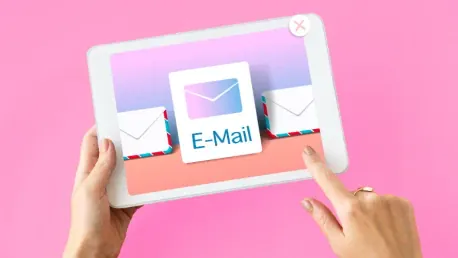In today’s digital age, leveraging multiple marketing channels is essential for reaching and engaging with your audience effectively. Email and SMS marketing are two powerful tools that, when synchronized, can significantly boost your marketing efforts. Harmonizing these efforts into a cohesive strategy can increase engagement rates and ultimately drive more revenue. By combining detailed, long-form content with immediate, high-impact messages, you create a dynamic marketing duo that covers multiple bases of customer interaction. This integration also provides an enhanced understanding of customer behaviors and preferences, which is crucial for personalizing your marketing campaigns.
The Power of Combining Email and SMS Marketing
Combining email and SMS marketing efforts increases the likelihood of marketing success, akin to a one-two punch in boxing. Email marketing has an ROI of approximately 3,600%, while SMS marketing boasts a whopping 7,100% ROI. When used together, they significantly enhance each other’s impact. By integrating email and SMS, marketers can reach their audience through multiple touchpoints, ensuring that their message is seen, heard, and acted upon. This dual approach captures the strengths of both channels, email’s depth and SMS’s immediacy, leading to higher engagement rates and a more responsive audience.
Reaching customers through both email and SMS ensures better message recall and greater likelihood of customer action. This synergy is particularly powerful because it leverages the strengths of both channels—email’s comprehensive, informative nature and SMS’s fast, immediate engagement. Beyond higher engagement, this approach helps build a robust understanding of your customers. Leveraging data collected from both channels, marketers can create detailed segments and craft highly personalized campaigns, tailoring messages to match customer preferences and behaviors accurately. This precision in targeting naturally leads to improved results and satisfaction.
Collecting Data for Effective Integration
To effectively synchronize email and SMS marketing, start by collecting both email and SMS details from your subscribers. This dual data collection facilitates a more nuanced understanding of customer behavior and preferences, enabling deeper segmentation and personalized marketing approaches. Use pop-ups on your website to gather visitor details, making sure that the option to submit a phone number is clearly labeled as optional to increase participation rates. New subscribers often evaluate a brand’s value through email first, so gently introducing them to SMS options with incentives like discounts or additional services can be very effective.
When subscribing through pop-ups or other touchpoints, offering incentives can boost sign-up rates significantly. For instance, a simple mention of a discount code for those who provide both email and SMS details can motivate visitors to opt in. Additionally, ongoing value-added services, such as early access to sales or exclusive offers via SMS, can reinforce the worth of dual-channel subscription. Comprehensive data collection methods that respect consumer privacy not only bolster the effectiveness of your marketing efforts but also lay the groundwork for developing strong, trustworthy relationships with your audience.
Compliance and Legal Considerations
When collecting subscribers’ information, it is crucial to adhere to relevant privacy laws. Display a disclaimer about the type of messages subscribers will receive and any potential charges for SMS responses. Clearly provide opt-out instructions and understand the regulations of including these in every text. Compliance not only protects your business from legal repercussions but also builds trust with your audience. Transparent communication about the types of messages and easy opt-out options ensure that subscribers feel in control and valued.
Adhering to privacy laws isn’t just a legal requirement; it’s also a best practice for maintaining customer trust and loyalty. Make sure your subscribers know exactly what type of communication to expect and how often. Always include a clear and straightforward way for them to opt out of messages if they choose. By setting and maintaining transparent expectations, you can enhance your brand’s reputation for honesty and integrity. Customers who know they can trust you with their data are more likely to stay engaged and loyal over time, leading to stronger, better-quality relationships.
Crafting Effective SMS and Email Content
SMS messages generally have a character limit of 160, including the brand name and message link. Exceeding this limit can lead to increased costs as messages are broken into parts. MMS provides more character space (360), including images, but demands concise and impactful messaging, which is complementary to email campaigns that can handle more detailed content. Crafting effective SMS content requires creativity and brevity. Use simple and direct language, avoiding overly complex or flowery text. On the other hand, emails can provide more detailed information about products or services, allowing for a richer storytelling approach.
Effective SMS marketing revolves around clarity and brevity. Keep messages short, impactful, and directly to the point. Always include a clear call to action to prompt immediate response. Emails, meanwhile, can cover more ground, providing the space needed for detailed explanations, vibrant imagery, and comprehensive calls to action. To make the most of each medium, tailor your content for its unique strengths. These differences can be leveraged into a cohesive strategy where SMS alerts direct customers to deeper, more detailed content hosted in emails or on your website, ensuring a seamless transition between the two.
Strategic Synchronization of Campaigns
To maximize the impact of your marketing efforts, strategically synchronize your email and SMS campaigns. SMS is best suited for urgent, direct messages, such as announcing new products or limited-time offers. Email campaigns cater to more detailed information about products or services. A strategic sequence might include a pre-launch SMS to generate interest, followed by a detailed launch email. Additional reminder emails can be supplemented by urgent reminder SMSs to keep the momentum going. Finally, a last chance SMS or email can provide a final push, ensuring that your audience remains engaged and informed throughout the campaign.
Strategically sequencing your communications ensures a balanced mix of urgency and detailed content delivery. For instance, an initial SMS can draw immediate attention, encouraging quick actions, whereas a follow-up email can elaborate on details, providing deeper engagement. By alternating between the touchpoints of SMS and email, you create multiple interaction opportunities. This layered approach keeps your campaign dynamic and comprehensive, ensuring your messages are not only received but also acted upon. Moreover, timing these sequences according to your audience’s behavior patterns increases the likelihood of conversion, as you’re meeting them at their preferred moments of engagement.
Integrating SMS into Email Automations
Enhance your email automation workflows by integrating SMS alerts for important triggers. For instance, an abandoned cart reminder can be followed by an SMS alert, increasing the chances of conversion. Similarly, an SMS notification about the expiration of a limited-time discount can prompt immediate action. By incorporating SMS into your email automations, you create a seamless and cohesive customer journey, ensuring that your messages are timely and relevant.
Incorporating SMS into automated workflows like welcome emails, order confirmations, and shipping notifications builds a cohesive, multi-touch communication strategy. Automating these touchpoints with integrated SMS can keep your brand top-of-mind without overwhelming the customer. This continual presence in both email inboxes and SMS inboxes ensures a persistent yet non-intrusive engagement channel, driving a higher likelihood of conversion and sustained interest. This synchronization allows for a well-rounded, uninterrupted customer experience, reinforcing your brand’s presence and value at every step of the journey.
Best Practices for SMS Marketing
In the current digital era, utilizing various marketing channels is crucial for effectively engaging with your audience. Among these, email and SMS marketing stand out as particularly powerful tools. When these two are synchronized, they can significantly amplify your marketing efforts. Creating a cohesive strategy that integrates both channels can lead to higher engagement rates and ultimately drive more revenue for your business. By combining in-depth, long-form content in emails with the immediacy and high impact of SMS messages, you can establish a dynamic marketing approach that addresses multiple facets of customer interaction. This integrated strategy also helps in better understanding customer behaviors and preferences, which is essential for tailoring personalized marketing campaigns. Additionally, synchronized email and SMS marketing can enhance customer experiences, making your brand more memorable and trustworthy. In doing so, you’re not only reaching a broader audience but also fostering stronger, more personalized connections, ultimately leading to sustained business growth and customer loyalty.









